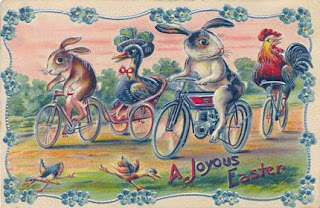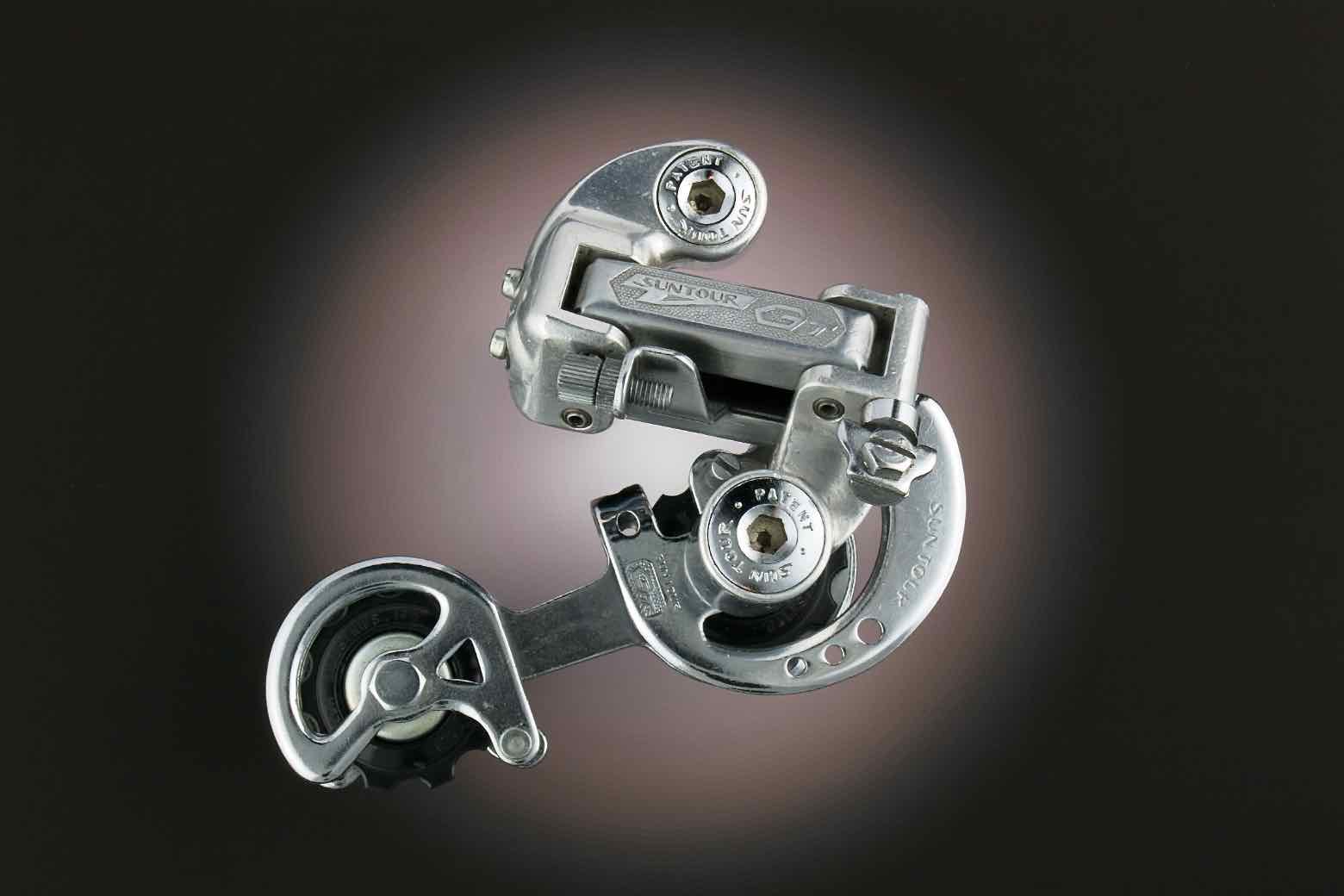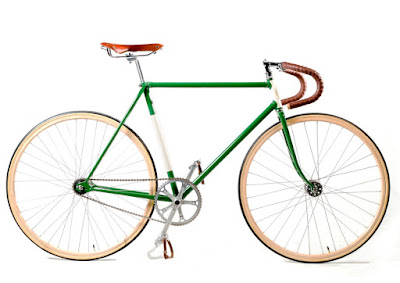Mention the year 1976 to most Americans, and they will think of their country's Bicentennial.
Mention that same year to most American cyclists--at least those of a certain age--and Bikecentennial will come to their minds.
Something else that became an important part of our lives is also about to turn 40 this year.
I'm not talking about punk rock. (Whether you date it to the Ramones' release of their self-titled album in February or the debut of "New Rose" by The Damned that October, punk rock began in 1976.) And I'm not talking about the founding of Apple or the debut of Big Red Gum or the Honda Accord--or, for that matter, the Laverne and Shirley series.
What I am referring to is the first race in Somerville.
But wait a minute, you say. First of all, it's the Tour of Somerville, though it is in fact a race. Second, it first ran in 1940. Didn't it?
Well, yes--for half of the population. For its first thirty-two editions (it was not held from 1943 until 1946 because of World War II), only men competed in what has been called "The Kentucky Derby of Cycling". But in 1976, the Mildred Kugler Women's Open--named for the daughter of Somerville's first winner, a top competitor in her own right--ran for the first time. Held on Memorial Day, the same day as the men's race, its list of competitors and winners reads like a who's who of women's cycling. As an example, Sue Novara, one of the best of the generation of female racers that put the sport "on the map" during the late 1970s and early 1980s, won the race four times.
The very first winner of the Women's Open is someone who, unless you are around my age or are immersed in cycling history, you probably haven't heard about. But in her day, she--a few years older than Novara and Sue Young--was one of the riders who picked up the torch from those who kept bicycle racing in the US alive during its Dark Ages and became, not only a world-class racer, but later a coach to the generation of riders who included Young and Novara, as well as later riders like Rebecca Twigg and Connie Carpenter.
Mary Jane "Miji" Reoch first won the US National Road Race championship in 1971, at the age of 26. She would go on to win ten more national championships on the road and track before retiring from racing at the end of the decade. She also led a contagion of American women cyclists on a tour of Europe, where they competed in, and won, still more events.
She also helped to shatter some prevalent myths about pregnancy and cycling. While she was racing, most obstetricians--nearly all of whom were male--recommended that women stop cycling as soon as they knew they were pregnant. Their advice was based on the notion, since discredited, that a woman would harm her fetus or baby if she continued to ride.
Well, Miji continued to ride all through her pregnancy. In fact, she pedaled to the hospital where she delivered her baby!
Miji--almost nobody called her by her full name--managed to earn the respect and garner the affection of a generation of those who raced with and against her, as well as those she coached and fans of racing. While coaching in Texas, she went for a training ride with one of her students on the morning of 11 September 1993. She was riding behind that trainee to better study that student's position and technique on the bike when an out-of control motorist struck her from behind.
That motorist--Mario Nambo Lara--was driving well over the 20mph speed limit on the wrong side of the road when he lost control. Reports said that she flew more than 90 feet through the air before landing in White Rock Lake. That night, she was pronounced dead at Doctors' Hospital in Dallas.
The pickup truck Lara drove was later found, abandoned. By then, Lara had fled to his native Mexico, where he was captured nearly three years later. It is believed that he was intoxicated on the day he crashed into, and killed, Miji.
The following year she was inducted into the US Cycling Hall of Fame. Women's racing, as we know it, might not exist had it not been for her work. And it's not hard to imagine how much more it could have advanced had Miji not met such an untimely and tragic death. She'd be 70 years old now, but if she could cycle to her delivery room, it's not difficult imagine she'd be cycling and coaching now.
Mention that same year to most American cyclists--at least those of a certain age--and Bikecentennial will come to their minds.
Something else that became an important part of our lives is also about to turn 40 this year.
I'm not talking about punk rock. (Whether you date it to the Ramones' release of their self-titled album in February or the debut of "New Rose" by The Damned that October, punk rock began in 1976.) And I'm not talking about the founding of Apple or the debut of Big Red Gum or the Honda Accord--or, for that matter, the Laverne and Shirley series.
What I am referring to is the first race in Somerville.
But wait a minute, you say. First of all, it's the Tour of Somerville, though it is in fact a race. Second, it first ran in 1940. Didn't it?
Well, yes--for half of the population. For its first thirty-two editions (it was not held from 1943 until 1946 because of World War II), only men competed in what has been called "The Kentucky Derby of Cycling". But in 1976, the Mildred Kugler Women's Open--named for the daughter of Somerville's first winner, a top competitor in her own right--ran for the first time. Held on Memorial Day, the same day as the men's race, its list of competitors and winners reads like a who's who of women's cycling. As an example, Sue Novara, one of the best of the generation of female racers that put the sport "on the map" during the late 1970s and early 1980s, won the race four times.
The very first winner of the Women's Open is someone who, unless you are around my age or are immersed in cycling history, you probably haven't heard about. But in her day, she--a few years older than Novara and Sue Young--was one of the riders who picked up the torch from those who kept bicycle racing in the US alive during its Dark Ages and became, not only a world-class racer, but later a coach to the generation of riders who included Young and Novara, as well as later riders like Rebecca Twigg and Connie Carpenter.
Mary Jane "Miji" Reoch first won the US National Road Race championship in 1971, at the age of 26. She would go on to win ten more national championships on the road and track before retiring from racing at the end of the decade. She also led a contagion of American women cyclists on a tour of Europe, where they competed in, and won, still more events.
She also helped to shatter some prevalent myths about pregnancy and cycling. While she was racing, most obstetricians--nearly all of whom were male--recommended that women stop cycling as soon as they knew they were pregnant. Their advice was based on the notion, since discredited, that a woman would harm her fetus or baby if she continued to ride.
Well, Miji continued to ride all through her pregnancy. In fact, she pedaled to the hospital where she delivered her baby!
Miji--almost nobody called her by her full name--managed to earn the respect and garner the affection of a generation of those who raced with and against her, as well as those she coached and fans of racing. While coaching in Texas, she went for a training ride with one of her students on the morning of 11 September 1993. She was riding behind that trainee to better study that student's position and technique on the bike when an out-of control motorist struck her from behind.
That motorist--Mario Nambo Lara--was driving well over the 20mph speed limit on the wrong side of the road when he lost control. Reports said that she flew more than 90 feet through the air before landing in White Rock Lake. That night, she was pronounced dead at Doctors' Hospital in Dallas.
The pickup truck Lara drove was later found, abandoned. By then, Lara had fled to his native Mexico, where he was captured nearly three years later. It is believed that he was intoxicated on the day he crashed into, and killed, Miji.
The following year she was inducted into the US Cycling Hall of Fame. Women's racing, as we know it, might not exist had it not been for her work. And it's not hard to imagine how much more it could have advanced had Miji not met such an untimely and tragic death. She'd be 70 years old now, but if she could cycle to her delivery room, it's not difficult imagine she'd be cycling and coaching now.

































